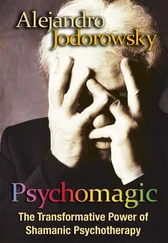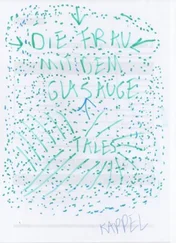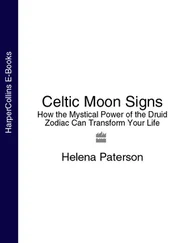Jodorowsky, Alejandro - Psychomagic - The Transformative Power of Shamanic Psychotherapy
Здесь есть возможность читать онлайн «Jodorowsky, Alejandro - Psychomagic - The Transformative Power of Shamanic Psychotherapy» весь текст электронной книги совершенно бесплатно (целиком полную версию без сокращений). В некоторых случаях можно слушать аудио, скачать через торрент в формате fb2 и присутствует краткое содержание. Год выпуска: 2010, Издательство: Inner Traditions Bear & Company, Жанр: Старинная литература, на английском языке. Описание произведения, (предисловие) а так же отзывы посетителей доступны на портале библиотеки ЛибКат.
- Название:Psychomagic: The Transformative Power of Shamanic Psychotherapy
- Автор:
- Издательство:Inner Traditions Bear & Company
- Жанр:
- Год:2010
- ISBN:нет данных
- Рейтинг книги:4 / 5. Голосов: 1
-
Избранное:Добавить в избранное
- Отзывы:
-
Ваша оценка:
- 80
- 1
- 2
- 3
- 4
- 5
Psychomagic: The Transformative Power of Shamanic Psychotherapy: краткое содержание, описание и аннотация
Предлагаем к чтению аннотацию, описание, краткое содержание или предисловие (зависит от того, что написал сам автор книги «Psychomagic: The Transformative Power of Shamanic Psychotherapy»). Если вы не нашли необходимую информацию о книге — напишите в комментариях, мы постараемся отыскать её.
Psychomagic: The Transformative Power of Shamanic Psychotherapy — читать онлайн бесплатно полную книгу (весь текст) целиком
Ниже представлен текст книги, разбитый по страницам. Система сохранения места последней прочитанной страницы, позволяет с удобством читать онлайн бесплатно книгу «Psychomagic: The Transformative Power of Shamanic Psychotherapy», без необходимости каждый раз заново искать на чём Вы остановились. Поставьте закладку, и сможете в любой момент перейти на страницу, на которой закончили чтение.
Интервал:
Закладка:
FREE YOURSELF FROM LANGUAGE
This will be a quick exercise in liberation from language. We are accustomed to always talking like normal beings. We are afraid of madness. However, the rivers that fall from the rooftops covered with doves will forever be white and dark, open to the tunnel of all delight . . . Did you understand? No? Yes? This is how you should speak; you should allow yourself to talk in a completely outrageous language to try to explain a feeling. You must create a conversation, communicate with a language that is verbal, that is not conceptual. Ready? You can raise whatever Samson you want, preventing Delilah from cutting his hair and, atop the table, declare three or four stories that will be deliciously sweetened. Okay? And what you have done with words, you can do to invent words, like this: Fai faias naracola ke. Costrigunsun tostecki batcherome quelarranamanda droi pretcho apandep ketackka kieugal pathcu! Reabutchis Kara miop. This is liberating. You can do it. Free yourself from the language. When you start doing this, you are going to like it. In the beginning you are going to feel cut off, because the largest prison is the articulate language, the logical language. It is a surrealist exercise. But it breaks the normal language to allow creative freedom. Maybe some things that come out will be in bad taste, but it doesn’t matter. Idiotic things, childish things. But beautiful things will also come out, suddenly. Try to do it, and then we will get into techniques for the imagination.
SIXTEEN

TECHNIQUES FOR THE IMAGINATION
The imagination operates on very simple principles. Some creators have used it to exhaustion. The basis of the imagination has four elements, which are like mathematical elements: addition, subtraction, division, and multiplication. These are the four elements of the imagination. First, there is addition and subtraction. Then division, next multiplication. And then, a mixture. And with these five things, you have the imaginations of crazy people. It is very simple. Using subtraction, you must take away from everything, in the imaginary, until everything becomes small. For example, one day you see someone pass by with a package, and in this package he carries his entire birthplace. You have an enormous imagination, because you have taken away from everything. You can miniaturize everything. In my left pocket, I can carry my mother; in my right pocket, I have my father. I make them talk, and then I look at them. This happened in the movie Honey, I Shrunk the Kids, so re-create this game.
One subtracts, subtracts—and one has to fight with the spiders. These are, to me, easy elements for the imagination. And they are very useful! But we also have the giants: this could be addition. You can enlarge a pumpkin. The typical example could be the pumpkin that grows and grows and reaches the size of the planet, converting itself into a planet. And then it is so big it occupies the galaxy. Inside the pumpkin, there is all of history; all of humanity is born. Anything can be enlarged this way. It is simple. Make whatever you want grow, make art. In architecture, you take three boxes of cherries; you raise them to make a building. This is how architects work. This is addition.
The imagination can increase or reduce. The Japanese imagination has created the small dwarf trees, or bonsai; the Jivaros shrink heads; the atomic bomb is an expansion of a small bomb; and cinema makes, for example, a monkey grow into King Kong or Godzilla. In my case, I have a comic strip called Megalex, about a city that occupies the whole planet, although I was not the first to do this.
Also the expansion of force is possible ( Superman ). All of the superheroes increase themselves in some way: for example, Flash Gordon is the fastest. A character who crosses over everything just with a look, or he who hears everything: this happens in fairy tales, too. Or the person who has the loudest voice and makes the buildings fall. There is the man who can sleep with three hundred women in a night, and so forth.
Imagine this: A horse passes in the street, and you think that there is an invasion, that horses are everywhere, that they are multiplying, that it is an epidemic. Now there are so many horses that we have to flee, because we are invaded. And at this point we can add another element: mixture. The horses convert themselves into carnivores, and it is necessary to escape because they are devouring the humans. This is the imagination. That is to say, the imagination has used the mixture. (But we were still talking about addition and subtraction.)
A person becomes very weak, very weak, so much so that it is necessary to tie her up with thread, like a marionette: she is the president, and she has to make a speech like that. Another example: a person loses power and her bones turn into liquid, like water. We can imagine it.
There is a story in which a young woman has such long hair that her lover can climb up her braids. This could be addition to a gentlewoman. Expand. Reduce.
(Many of Ionesco’s works are very simple. In one of them there is a woman who serves a cup of tea, and then another, and another—thousands of cups of tea. In another, there are mushrooms that grow—until the entire house is full of them. In another, a dead body grows and grows and occupies the whole stage. And in The Chairs , there is a chair, then another chair—until the entire stage is full of chairs. This is to say, the author does not have to have much imagination, because he simply uses the make-things-grow trick. In all of his works, there is something that he multiplies. This becomes the norm!)
Another element of the imagination is where something begins to decrease. Fuel is scarce, water is scarce. Dune is a planet where there is no water. Here is an entire work about a planet that does not have water. An element has been split. And in splitting an element of nature, you make an imaginary world. I am showing you the processes of the imagination, formulas that you can apply anytime to your world and be able to create. Expand, reduce. You can do it.
A telephone call, ten telephone calls, all over the planet the telephones begin to ring, the buildings fall, and there is a catastrophe. Through multiplication. By magnification. Then, division steps in: There is a hand that walks alone, it jumps on your neck and strangles you. And it escapes as if it were a spider. This is division. You are walking on the street, and you see two legs that walk without a body. In a study by Jung of the stories of Native Americans, he talks about a hero who wanted to make love to the chief ’s daughter. So, he sent his phallus through the water and the phallus alone made love to the girl, leaving her pregnant. In this way, he managed to marry her.
Multiplication. Some Hindu goddesses have multiple arms. And each hand has an eye. Multiplication of the arms. Ganesh has four arms. There is also a Greek god with three heads. In the Odyssey, the cyclops has only one eye, on the forehead. That is reduction. In the case of the third eye, there is one eye more. That would be multiplication.
And then, with these four elements, one produces a mixture: the Egyptian sphinx. It has a human head, a lion’s body, an eagle’s wings, a cow’s tail. It is a monster. There are a number of examples in the paintings of El Bosco (Hieronymus Bosch), who often mixed elements. A centaur is a mixture of man and animal. You take an element of one and an element of another and join them. That is how monsters are created. An angel is a mixture of a human being and a bird with wings.
For a long time, I have been developing such mixtures. I imagined, for example, integrating the head of an elephant with a body that is a cloud, with four staircases for legs. This ability to mix elements presents interesting artistic possibilities, and the imagination uses them. These are techniques that we have at our disposal. Notice how we are always witnessing applications of this technique, in art, in publicity. If you master this technique, you can work in any advertising agency.
Читать дальшеИнтервал:
Закладка:
Похожие книги на «Psychomagic: The Transformative Power of Shamanic Psychotherapy»
Представляем Вашему вниманию похожие книги на «Psychomagic: The Transformative Power of Shamanic Psychotherapy» списком для выбора. Мы отобрали схожую по названию и смыслу литературу в надежде предоставить читателям больше вариантов отыскать новые, интересные, ещё непрочитанные произведения.
Обсуждение, отзывы о книге «Psychomagic: The Transformative Power of Shamanic Psychotherapy» и просто собственные мнения читателей. Оставьте ваши комментарии, напишите, что Вы думаете о произведении, его смысле или главных героях. Укажите что конкретно понравилось, а что нет, и почему Вы так считаете.












